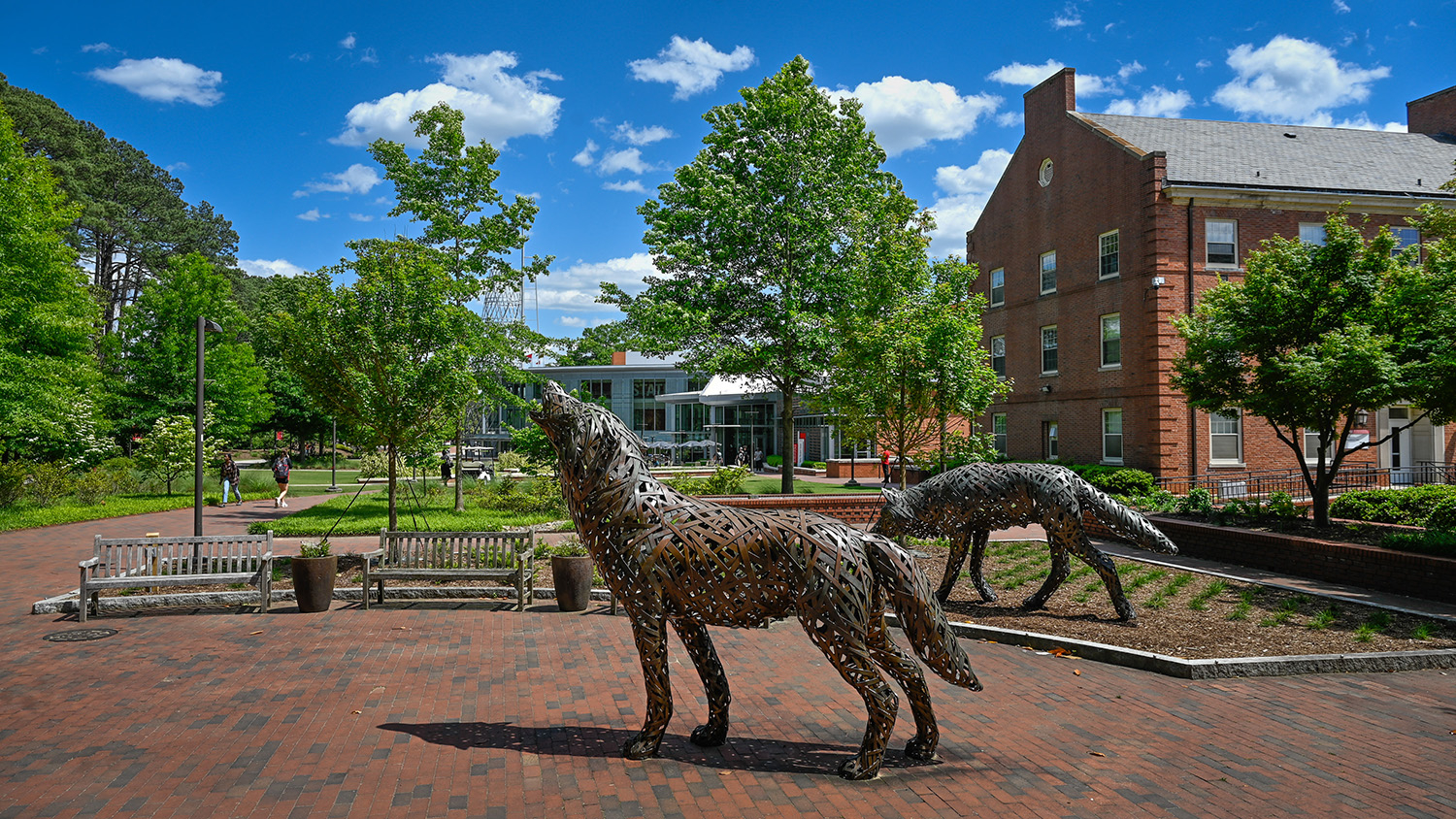Light My Color Wall
If the ‘60s were never all that psychedelic in Raleigh, the ‘70s literally glowed in the dark. Karl Larson, an NC State student in the days when flower power was an alternative energy source, remembers being transfixed by a vibrant, flowing, ever-changing wall of color.
“It was indescribable,” Larson recalls. “It was mesmerizing.”
In the evenings, after long study sessions in the D.H. Hill Library, Larson and his friends would pull into a bank parking lot on Hillsborough Street and watch a ballet of color through the library’s plate glass windows. It was the Color Wall, a kinetic light sculpture installed on the first floor of the library’s newly constructed book tower in 1972 by artist Joe Cox, a longtime professor in the College of Design.
“I had to see the color wall before I went home,” Larson says.
It was, by all accounts, dazzling.
The design was ingenious, says David Hiscoe, the library’s outreach director.
“It represented the best of NC State,” he says. ”Joe Cox took ideas from the physics of light, mechanical engineering and electrical engineering and turned them into art.”
The wall itself was rather plain, just a piece of white canvas affixed to the south side of a narrow hallway facing a bank of windows overlooking Hillsborough Street. Cox installed 23 spotlights with colored gels above the wall and then attached a series of black metal vanes to the face of the wall so the spotlights would cast shadows at various angles. The brains of the operation was a mechanical device Cox invented to synchronize the lights, turning them on and off in a rhythmic pattern to give the illusion of movement.
Once it came on after sunset, the wall was a symphony of light, displaying hundreds of vertical bands of multicolored light in a pattern that changed 32 times every two minutes.
Although the Color Wall no longer works, the wall and spotlights are still there, and Larson – now a graphic designer in the Department of Communication Services – is spearheading a grassroots drive to raise funds to restore the sculpture. In May, he lamented the sorry state of the wall in a post on the blog, “Goodnight Raleigh.”
“I remember that a viewing of the Color Wall was often an on again, off again proposition, as the mechanical elements of the switching system were given to frequent malfunctions,” Larson wrote in the post. “More than once I would tell a friend about it with great enthusiasm, only to hear later from the disappointed friend, ‘It wasn’t working.’ As I recall, the Color Wall did not function at all for the entire decade of the 1990s.”
His wistful reminiscence prompted an outpouring of support and more than $1200 in donations. After consulting with library staff, Larson set up a Web site to promote the cause and is channeling donations through the Library Art Preservation Fund at NC State. He hopes to raise more than $6,000 to purchase a computerized timing device to replace the mechanical system, and to pay for regular maintenance of the light sculpture.
Cox, who died in 1997, created at least three other light murals, including one in the ceiling of a bank in Durham that works, but is seldom turned on. The two other murals are believed lost.
“This is Joe Cox’s legacy to the university,” Larson says. “He gave it to the university and we should do our best to preserve it. He was a beloved teacher and a great artist.”
- Categories:


